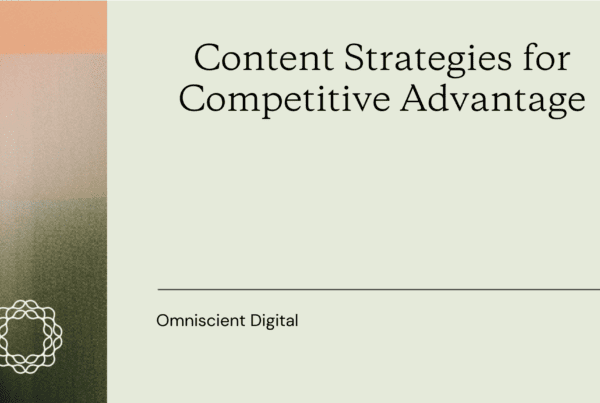Here’s the trap many marketers (individual contributors and leaders, often advised by expensive consultants and agencies) fall into when it comes to content marketing.
Traffic has been growing, but most of the traffic is from a handful of posts ranking for high search volume keywords. The content strategy to drive traffic worked!
Well, it turns out those blog posts don’t generate any leads.
Why? Because the articles are usually basic, 101 articles about the industry. Maybe they’re called “What is [topic]?” or “How to do [task].”
Those topics naturally have more search volume because there are more beginners than advanced practitioners in every industry.
But who reads that type of content? Entry-level professionals, beginners, inexperienced folks.
There’s nothing wrong with producing content for that audience, but that group of people does not want a demo of your B2B software product.
They’re not the target buyer or the decision maker.
And they probably aren’t even facing the challenges your product helps solve.
But the traffic growth is nice to report to leadership. So leadership wants to maintain that low-purchase-intent traffic while also getting more leads.
So the conclusion might be that it’s a conversion rate optimization problem. Let’s slap on a bunch of calls to action and pop-ups. But that won’t work because those readers aren’t the target buyers!
Adding to the pressure, that handful of blog posts likely contributes 80% of the organic traffic to the blog or site. So a drop in a handful of keyword rankings would be detrimental to organic traffic reports. In those cases, there’s all of a sudden a huge spotlight focused on maintaining that low quality traffic.
The marketing team is now stuck in a trap.
Now they have to continue dedicating time, energy, and resources to maintain traffic to a piece of content that won’t have any business impact. At the same time, they have to change their content strategy to focus on generating leads.
Does any of this sound familiar?
It’s the trap that many marketing teams fall into.
Someone had an innocent goal to grow organic traffic, came up with a list of tactics (do keyword research, write SEO articles), and started checking the boxes.
Publish more articles targeting high search volume keywords.
Woohoo! Traffic is growing!
Inevitably, someone asks, “Great! How many leads are we getting?”
“Wait what? No, traffic was the goal.”
Driven by this goal of growing organic traffic, marketers ended up writing content that speaks to the wrong person.
Uh oh.
So how do we avoid this trap? And, if you’re already in it, I’ll share how to get out of it.
How to avoid the traffic trap
Before writing any content:
- Define the business goal
- Define why it’s important to help the business achieve it that goal
- Define why you believe content is the best path toward that goal
- Define the success metric(s)
- THEN, define the specifics for how you’ll execute (type of audit to run, type of content to produce, what content to update, topics and keywords to write about, etc.)
Most people start with step 4 and 5 before defining the why behind the content, i.e. the content strategy.
So if you’re already in this trap, what do you do?
It’s simple, but not easy.
You need to have some difficult conversations about what you (and potentially your team) are optimizing for.
Someone (probably in leadership) needs to say, “We had a goal of growing traffic, which we did very well. We’ve found that traffic isn’t converting at a rate that will meaningfully contribute to our lead generation goal. We need to iterate on the strategy and success metric to make sure the content we produce moving forward drives both traffic and leads.”
Simple, but not easy.
That’s where we help clients. We ask the often difficult and sometimes uncomfortable questions. We help catalyze discussion and push back on a strategy that didn’t give them the outcome they wanted.
We help iterate on the strategy and get them back on track.
If you’ve found yourself in the traffic trap, we can help. Get in touch.


